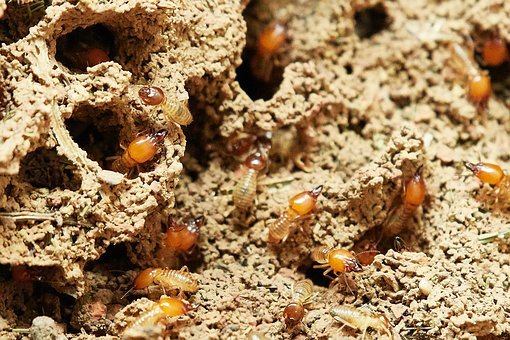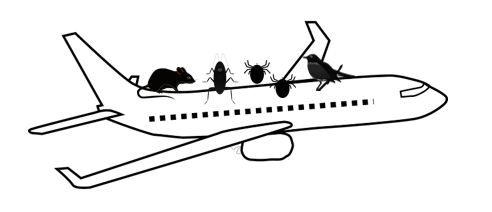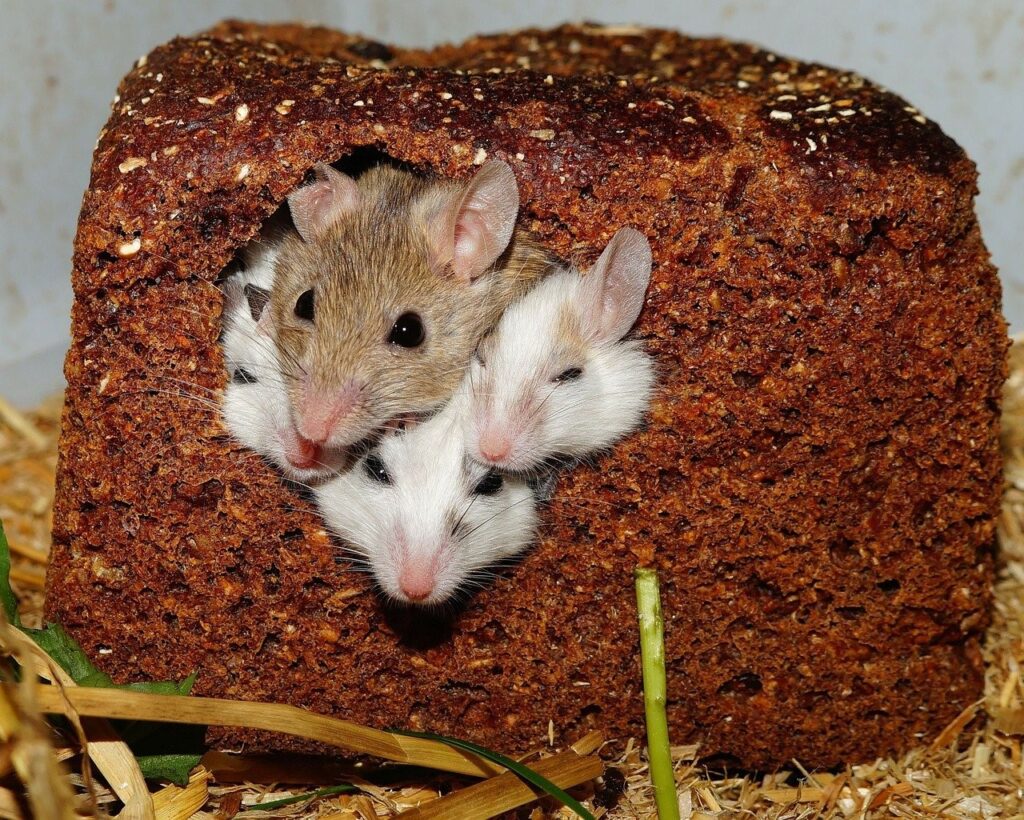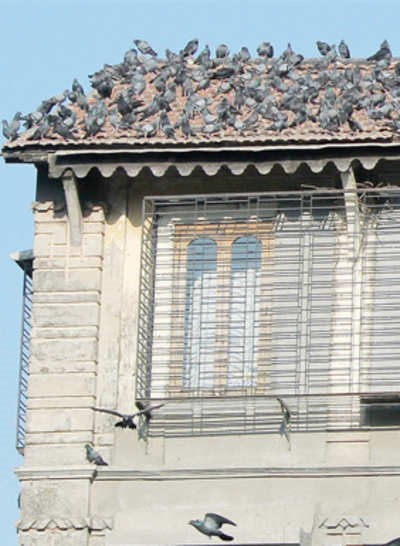
Heritage monuments are antique and culturally significant!
They essentially reflect a country’s culture and tradition. These buildings have old significance due to the architectural beauty and their correlation to key moments such as ritual, political and cultural events in the domain of historic roots.
But did you know termites spent years feasting on these majestic structures!
Termite infestations seem to be a threat at many historic sites for decades. Factors such as termite adaptability, complexities, and limitations of conventional pest control product efficacy; termites became a serious threat to those magnificent monuments.
Termites are social insects that live in colonies and spread all over the world. Their colonies feast on cellulose 24×7 which is mainly found in wood. Cellulose can provide the essential nutrients required for their growth.
The experimental results suggest that “a colony of 200,000 can consume up to 12 pounds of cellulose per year.”
Before evidence of infestation is observed, colonies of a range of hundreds to several thousand may result in substantial damage to heritage buildings. Termites can dig up tunnels close to the edge of a ravaged structure to slash the last coating of paint and other material to acquire food. They eat continuously throughout the day as a result they invade the whole heritage structure without being noticed. They chew on wallpaper, paints, wooden articles, and even the books which represent our evolving behavior and events of the past.
These are some recent incidents where termites are blamed for the damage caused to heritage sites!
Termite damage to force demolition of the historic log cabin in Hamilton
Due to termite attacks, a historic log cabin that Hamilton officials hoped could be restored to function as a residence will have to be torn down. The city called for proposals to redevelop the cabin, which is thought to date from the 1800s, earlier this year. When three city workers took a prospective developer to see it, 223 and 225 S. C St. in the historic Rossville area, the city’s top building inspector, Ken Rivera, found termite damage and advised his colleagues that the structure needed to be demolished because it was in danger of collapsing.
Termites damage Hoi An’s historic relics
Termites are threatening many relics in the old quarter of Hoi An ancient town, a UNESCO-recognized world heritage, local authorities, and residents have reported. A survey by the Institute of Ecology and Works Protection in collaboration with the Hoi An Cultural Heritage Conservation Management Centre (CHCMC) recently revealed 265 of the 800 historical relics in the old quarter of Hoi An Town have some levels of termite problems.
The survey said these relics have been severely damaged since the recent COVID-19 social distancing last July. They also issued an urgent warning that solutions should be needed immediately to prevent the damage and keep the termites away, or the relics would be destroyed in a short time. Pham Phu Ngoc, Director of the CHCMC, said the termites had caused rapid degradation of the relics. The official added that after each rainy season, the weather changed, causing humidity that helped termites appear more in the wooden relics.
Due to climate change, the weather is increasingly erratic, creating favorable conditions for termites to develop and impact relics very quickly, according to Ngoc.
These incidents proved that termites are a serious hurdle for heritage sites!
Many insecticide barrier and baiting technologies have been tried and tested to control the population of termites every method comes with its drawbacks. Termite baits take a long time to eliminate their population. Historic structures often are located in sensitive areas so spraying toxic insecticides may contaminate natural habitats. Also, it may cause damage to historic relics.
In Cho-ho Ji, a 500-yr-old Buddhist temple in Wakayama, Japan, wooden gates were irreversibly stained by the liquid insecticides.
Conventional pest control methods may give a faster result by killing a small number of termites at the treatment site, but it only drives termites from one part of the property to another without affecting the overall population.
Along with termites, birds are well-known for causing damage to these precious monuments. Uric acid is released from their excrement which leads to stonework corrosion and these corrosive effects can continue for a long time after the stone has been contaminated, even if the fouling is removed.
So how we can mitigate those creepy pests for long period without affecting the ecosystem?
We at C Tech Corporation have devised a sensible approach!
Our product Termirepel™ is a perfect blend of green chemistry and smart technology. It does not kill, only repels. It is environmentally friendly and does not affect insects, humans, or the ecosystem in any way.
Termirepel™ is an extremely low-toxic, extremely low-hazard, bio-safe anti-termite and insect aversive that is effective against termites and works well on a wide range of insects including crazy ants, bedbugs, cockroaches, etc. It is an insect repellent with a wide range of repellence tactics that efficiently keep insects at bay!
Termirepel™ is available in various forms such as masterbatch, liquid concentrate, lacquer, wood polish additive, and spray.
The masterbatch can be incorporated with polymeric applications such as wires and cables, pipes, films while manufacturing. This will make the application safe from pest attacks.
The liquid concentrate can be mixed with paint in a pre-determined ratio and can be applied on interior and exterior walls of buildings and structures. Our liquid concentrate is compatible with all types of paints and solvents.
The lacquer is a topical application and it is compatible with most of the surfaces such as polymer, wood, ceramic, metal, and concrete. The lacquer can be applied directly to statues, flooring, and other precious structures.
The wood polish additive can be blended with wood polish and can be applied on wooden articles such as staircases, storage compartments, bookshelves, etc. to prevent them from wood-eating insects.
The Termirepel™ spray can be sprayed directly on any infested area to prevent the damage caused by insects.
Our bird-repellent gel lacquer is non-corrosive, waterproof, and compatible with most of the surfaces it can be applied on statues and monuments, window ledges, roofing, etc. where birds roost or perch.
The bye-bye birdy spray can be sprayed directly on the surface to prevent birds from roosting.
Using our products you can repel pests in an environmentally friendly way!
Contact us at technical.marketing@ctechcorporation.com to combat pest menace.
Also, visit our websites:
http://www.ctechcorporation.com/
Follow our Facebook pages at:
1] https://www.facebook.com/Combirepel-411710912249274/
2] https://www.facebook.com/Termirepel-104225413091251/
3] https://www.facebook.com/Rodrepel-120734974768048/
Follow us on our Twitter pages at:
1] https://twitter.com/rodrepel













 Marmots are large rodents that often become a nuisance to gardeners, farmers, and homeowners due to their appetites and burrowing habits. The yellow-bellied marmot is the most common species in the United States and a close relative of the woodchuck. Also known as rockchucks or whistle pigs, yellow-bellied marmots are social creatures that live in communities of 10 to 20 individuals. During the spring and summer, the animals undergo a period of hyperphagia, a feeding frenzy designed to fatten the marmots so they can survive the coming winter. By huddling together in underground burrows lined with hay or grass, marmots hibernate for up to 200 days at a time, easily spending half of their 13 to 15 years of life asleep.
Marmots are large rodents that often become a nuisance to gardeners, farmers, and homeowners due to their appetites and burrowing habits. The yellow-bellied marmot is the most common species in the United States and a close relative of the woodchuck. Also known as rockchucks or whistle pigs, yellow-bellied marmots are social creatures that live in communities of 10 to 20 individuals. During the spring and summer, the animals undergo a period of hyperphagia, a feeding frenzy designed to fatten the marmots so they can survive the coming winter. By huddling together in underground burrows lined with hay or grass, marmots hibernate for up to 200 days at a time, easily spending half of their 13 to 15 years of life asleep.